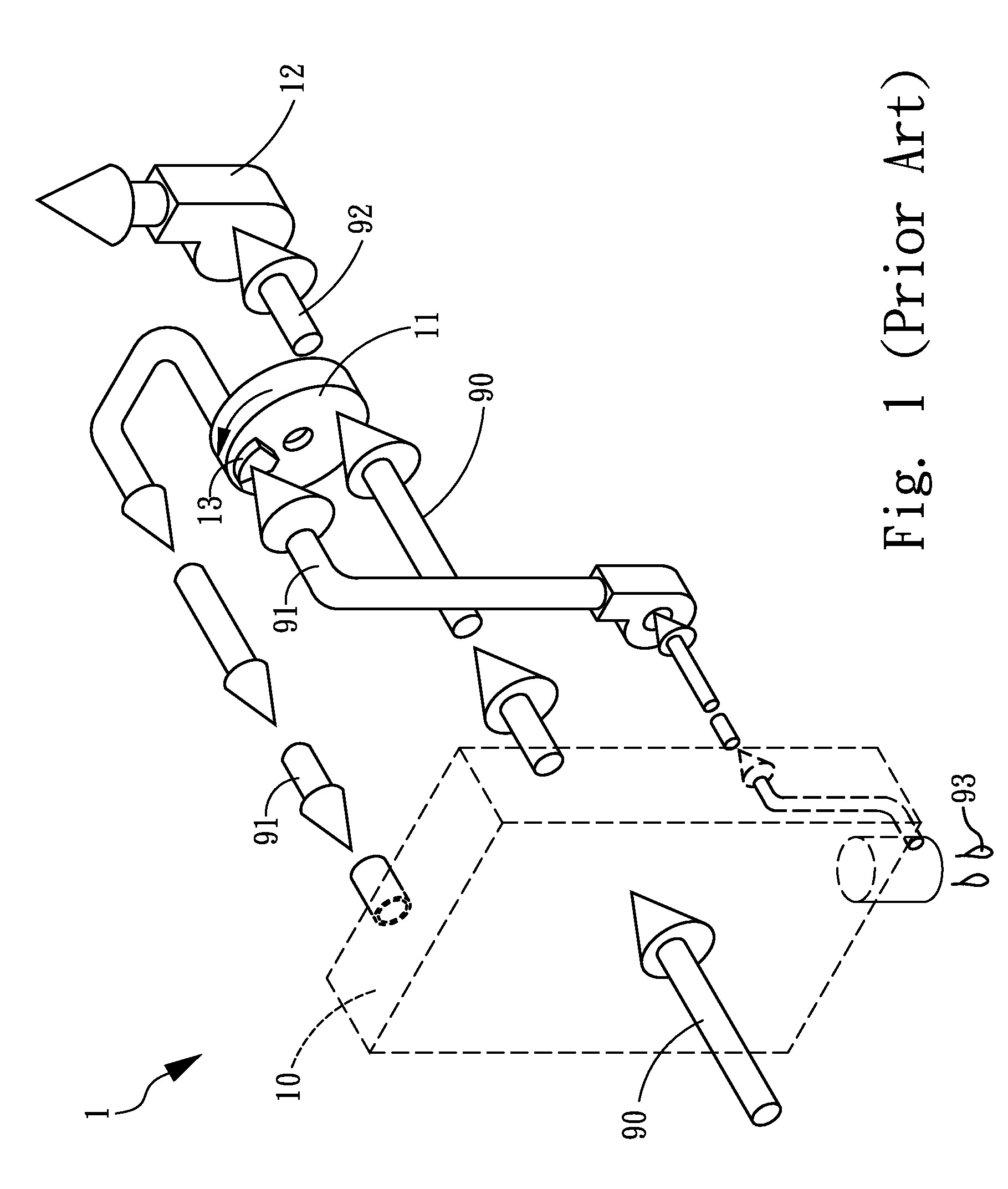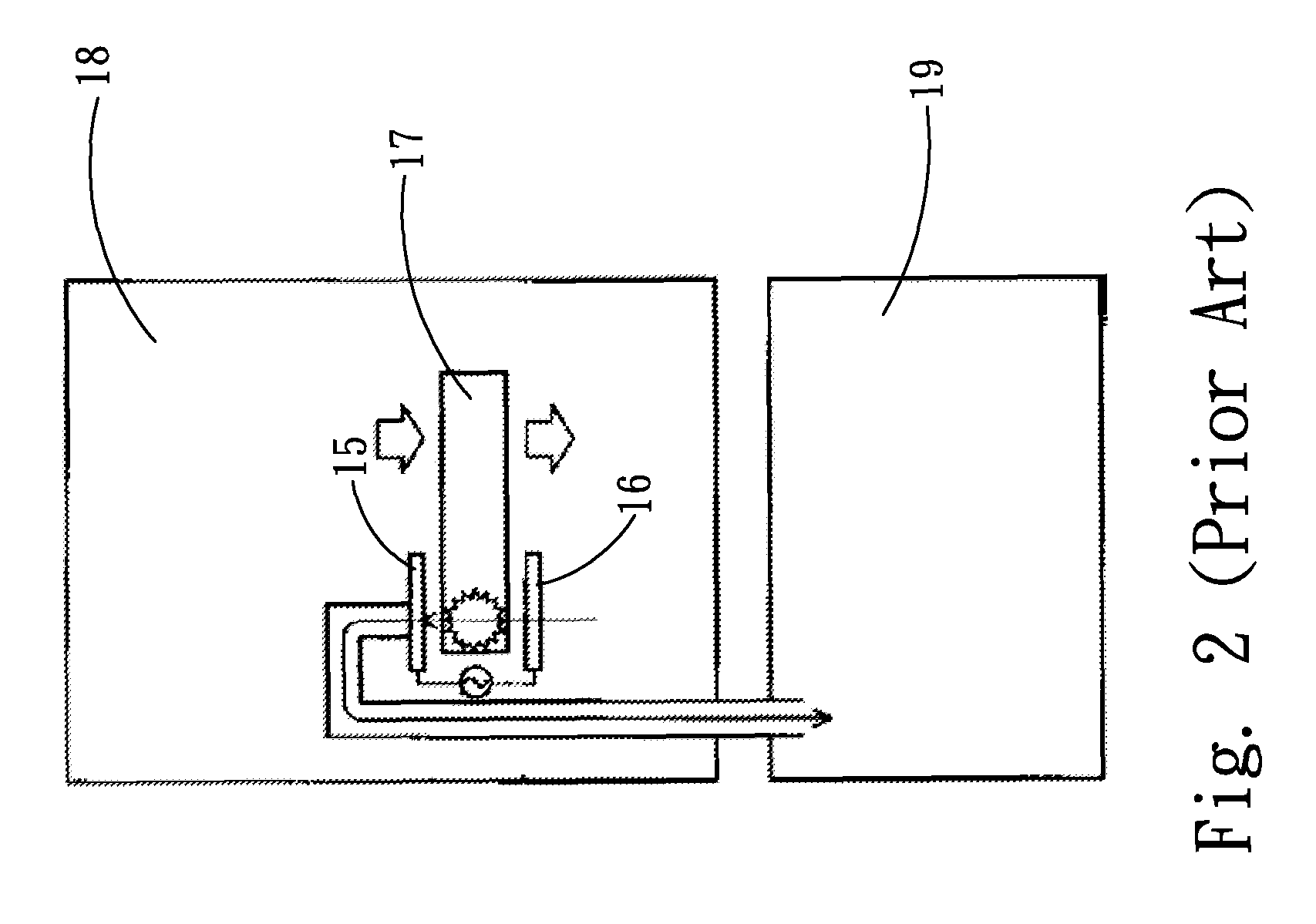Method and apparatus for desorption and dehumidifier using the same
a dehumidifier and dehumidifier technology, applied in the field of dehumidification technology, can solve the problems of high energy consumption, high approach cost, and high power consumption to achieve dehumidification, and achieve the effect of improving the dehumidification efficiency of the rotary dehumidifier, reducing the power dissipation of the heater, and enhancing the water desorption efficiency of the rotator
- Summary
- Abstract
- Description
- Claims
- Application Information
AI Technical Summary
Benefits of technology
Problems solved by technology
Method used
Image
Examples
first embodiment
[0045]Please refer to FIG. 3, which is a schematic diagram of a dehumidifier according to the present invention. The dehumidifier 2 comprises a condenser 20, an absorbing material 21 and a regenerating portion 22. The condenser 20 comprises a condenser plate 201 and a regenerating blower 202. An inlet 2010 of the condenser plate 201 is channeled with an inlet 220 of the regenerating portion 22 through a pipeline. To simplify FIG. 3, the pipeline is not shown, while those with ordinary skills in the art can understand the present invention. In the present embodiment, the condenser plate 201 comprises a plurality of condenser pipelines 2011, comprising a flowing path for a circulating gas flow 91 to flow therein. Since the condenser plate 201 is provided to enable a gas flow 90 to be dehumidified to pass through so that a heat exchange process is performed between the gas flow 90 and the circulating gas flow 91 in the condenser plate 201, there are interstices between the condenser pi...
second embodiment
[0052]In the previous embodiment, a current is conducted between the electrodes that do not contact the absorbing material. Alternatively, in the next embodiment, the electrodes are connected with the absorbing material so that a current is conducted between the electrodes to desorb a substance. Please refer to FIG. 5, which is a flowchart of a low power consumption desorption method of the present invention. In the present embodiment, the method 4 comprises steps as described hereinafter. Firstly, in step 40, an absorbing material is provided. The absorbing material is capable of absorbing organic volatile substances, nitrogen or moistures, but not limited thereto. Generally, the absorbing material is usually used in household dehumidifiers, such as rotary dehumidifier, but not limited thereto. The absorbing material can be made of porous materials such as zeolite, silicone, silica gel, active carbon, carbon nano tubes, metal organic frameworks. Moreover, the absorbing material ma...
PUM
 Login to View More
Login to View More Abstract
Description
Claims
Application Information
 Login to View More
Login to View More - R&D
- Intellectual Property
- Life Sciences
- Materials
- Tech Scout
- Unparalleled Data Quality
- Higher Quality Content
- 60% Fewer Hallucinations
Browse by: Latest US Patents, China's latest patents, Technical Efficacy Thesaurus, Application Domain, Technology Topic, Popular Technical Reports.
© 2025 PatSnap. All rights reserved.Legal|Privacy policy|Modern Slavery Act Transparency Statement|Sitemap|About US| Contact US: help@patsnap.com



